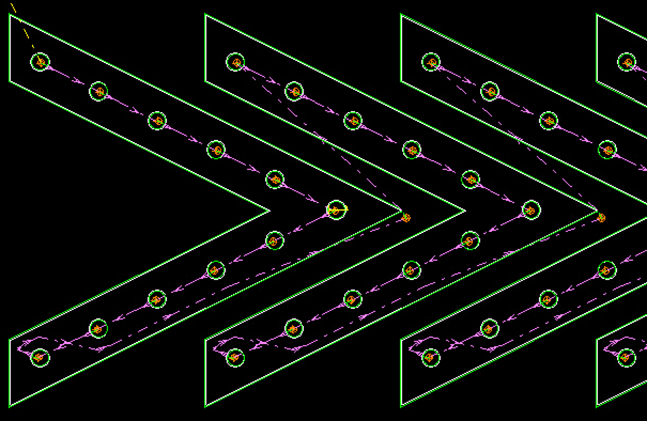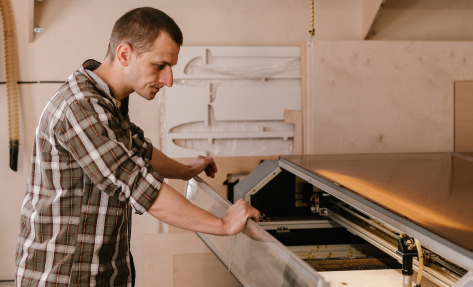SST Shop Talk
Cycle Time Reduction Principles for CNC Machining Equipment

What is the definition of cycle time?
Cycle time is defined to be the time that happens from the time a task or series of tasks is initiated to the time a task is completed. Example, the cycle time is the time a shipping order is printed to the time it is loaded on the truck and the system is updated. An alternate definition would be is the time it takes to load, run, and unload on workpiece.
Cycle time of a machine can be simply measured by timing how long it takes from pressing the button to start the cycle for the first workpiece to the pressing the next button for the next workpiece.
Production quantities in an industry dictate that the more workpieces you run, the more important it is to achieve the goal of lowering the cycle time.
Everything and anything that happens in a Computer Numerical Control (CNC) machining equipment can be divided into four categories:
1.) On-line, productive tasks:
These are the actual machining operations that occur during a CNC cycle. These are the milling, drilling, tapping, reaming, and any other machining operation that in some way furthers the completion of the workpiece. To minimize the cycle time in these areas, there are two ways in which this can be achieved. One would be through careful process planning.
The process engineer must select an appropriate machine tool, cutting tools, fixturing, and machining order in a way that it matches the number of workpieces to be machined that will be based on the production quantity. The cycle time will be a reflection of the processes being used to machine workpieces.
If in the many times that your companyís processes have already been developed and implemented before you begin your cycle time reduction program, then your second alternative is to optimize cutting operations for this would involve properly selecting cutting tool materials, feeds, and speeds to machine workpieces as efficiently as possible with the current process.
2.) On-line, non-productive tasks:
These are tasks that occur during the machining cycle that do not actually further the completion of the workpiece. The first thing Computer Numerical Control people often target for improvement is wasted program execution time. These are the things like rapid movements, tool changes, M-code execution and spindle acceleration/deceleration. Reducing program execution time in this area is usually easy.
It often takes nothing more than carefully monitoring the production run for a few workpieces to find those times when the program can be modified to eliminate noticeable pauses during the cycle. Although keep in mind that the worker for these machines must not overlook other processes for they may be so concerned with minimizing program execution that they overlook other operations, resulting in severe wastes of cycle time.
3.) Off-line, non-productive tasks:
These are the tasks performed in the machining cycle that do nothing to further the completion of the workpiece. Since these types of tasks are done while the machine is producing workpieces, they do not actually add to the cycle time. It is possible to free the operator of the machines of performing off-line productive tasks if they have little, or nothing to do during lengthy machine cycles.
4.) Off-line, productive tasks:
These are the tasks done away by the CNC machine, while the machine is producing workpieces, which would further the completion of the workpiece. This is extremely helpful during lengthy CNC cycles, tasks in this category can reduce the time it takes to complete the production run dramatically, which would effectively reduce cycle time.
The Programmer
The first person is the CNC programmer. He is like the "playmaker". He will create the programs that the CNC machines are intended to execute. Since the programs are in the form of CNC codes fabricated like sentences, he should have mastered these codes because they work like a different language. The regular CNC machine can use up to 50 codes, so that's like learning 50 new words for the newbie.
Also, the programmer should have at least and engineering or machining degree. Remember that the CNC machine will only execute WHAT IT IS PROGRAMMED TO DO. If the program is wrong, the whole operation goes down the drain with it. Moreover he should also be flexible and have a fast turn-around because a CNC machine is often used to machine a huge selection of different work-pieces.

The Technician
The third person that will need is the CNC technician. Although this may still be the programmer, it is more convenient to always have a technical expert on-call because in the long run, you may have more than one CNC machine and you may need to prioritize over the other in case both gets crippled at the same time. Just like the programmer, the technician should also be flexible and articulate. CNC offers a lot of complexity when it is running right, how much more if it is behaving badly?
So, if you are having job openings for positions that need to be handling a CNC machine, ask the applicants first to do a demo for you and make sure that during the demo, they know what they're doing. An exam may also do wonders too. If they have no experience with any kind of CNC machine, it is advisable that you encourage them to take short courses on CNC.
Eighty-hour courses are available online and hey, it is better than nothing. Experts even encourage employers to hire CNC machinists who have finished AND PASSED the National Occupational Competency Testing Institute (NOCTI) assessment just so they could be sure that their CNC machines will go to good hands. After all, a CNC machine is still an asset.

The Operator
The second person that you need is the CNC operator. He will simply recheck the programs loaded to the machine and push the right buttons to get the work done. However, thinking that a CNC operator can have little or NO SKILL AT ALL is wrong. A CNC machine operator must have at least basic machining skills and he should have undergone some form of training to run a CNC machine.
These machines can produce very intricate motions, making it possible to make shapes that cannot be created on conventional machine tools. So, the operator should foresee this complexity and know how to cruise with it. The skills that an operator must have though, are lesser compared to the operators of conventional machine tools.



